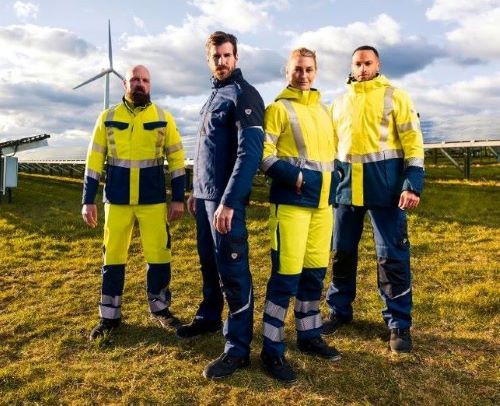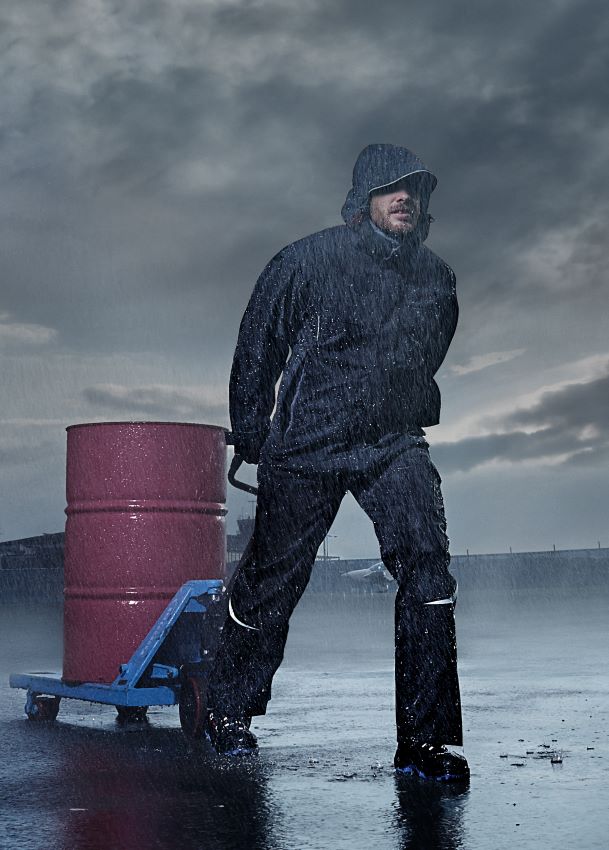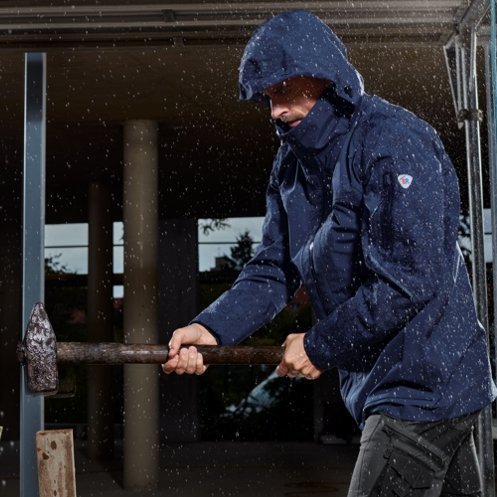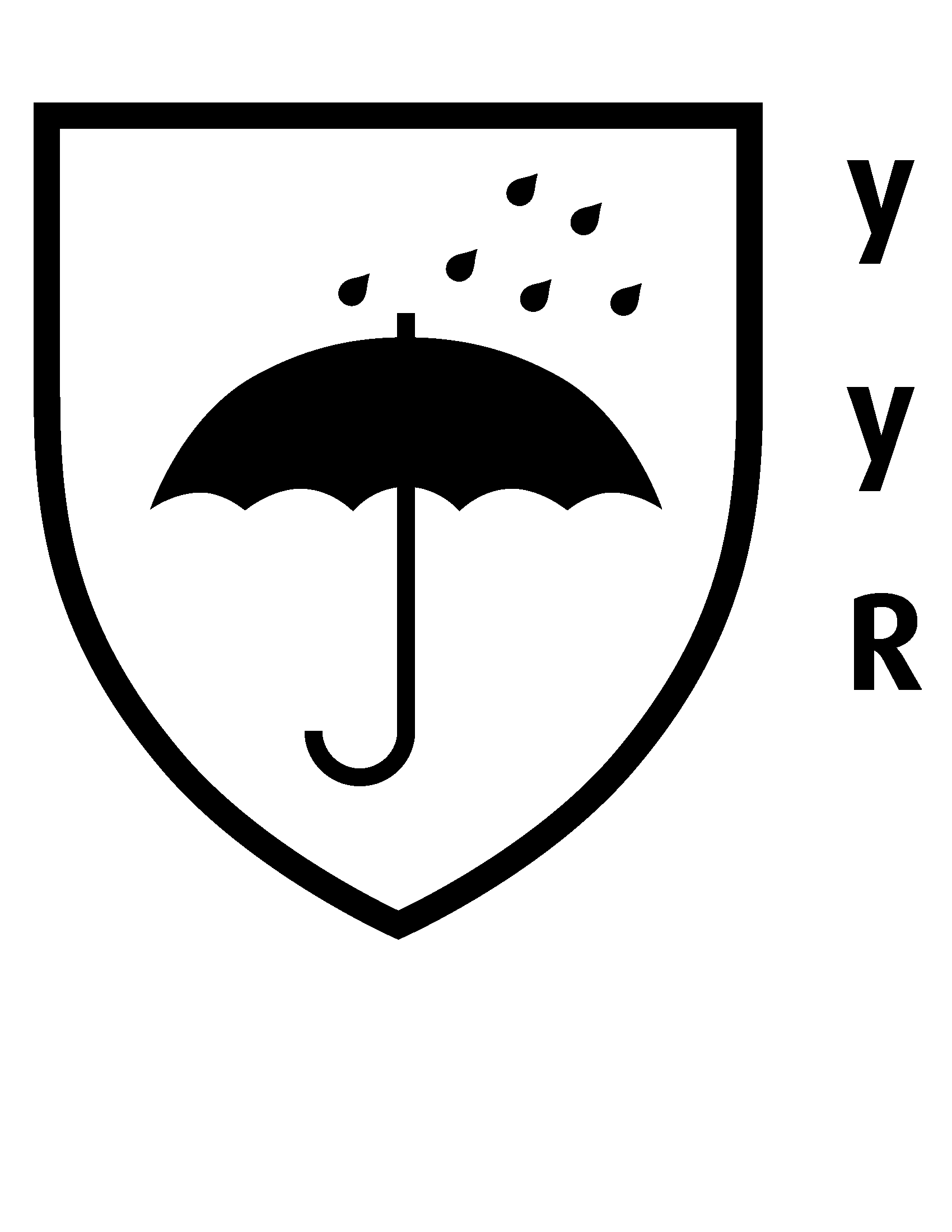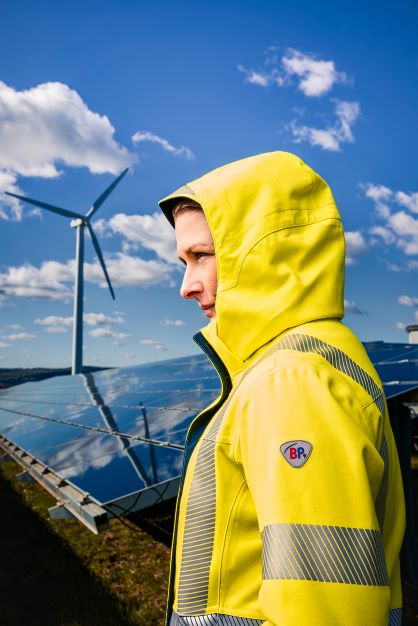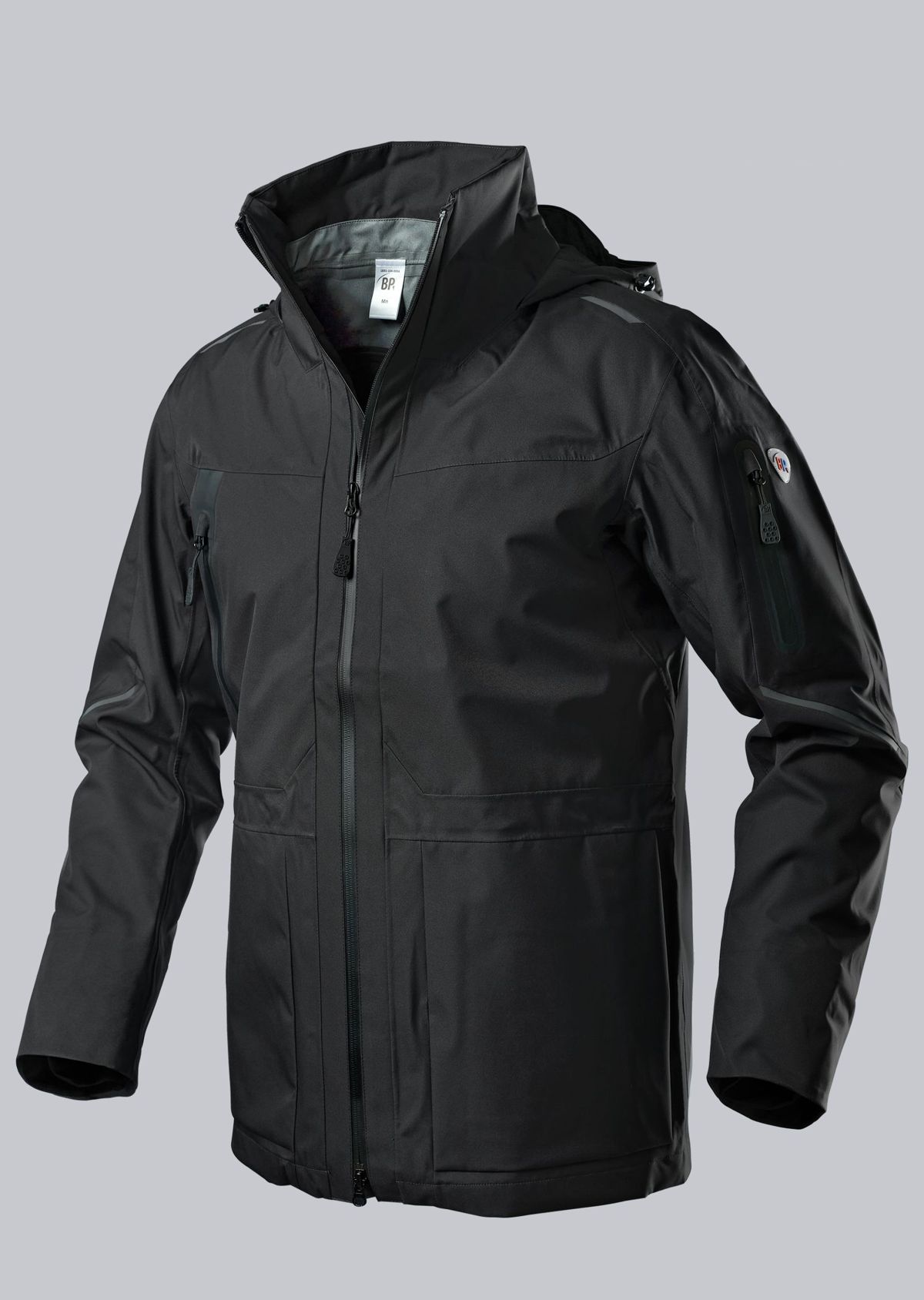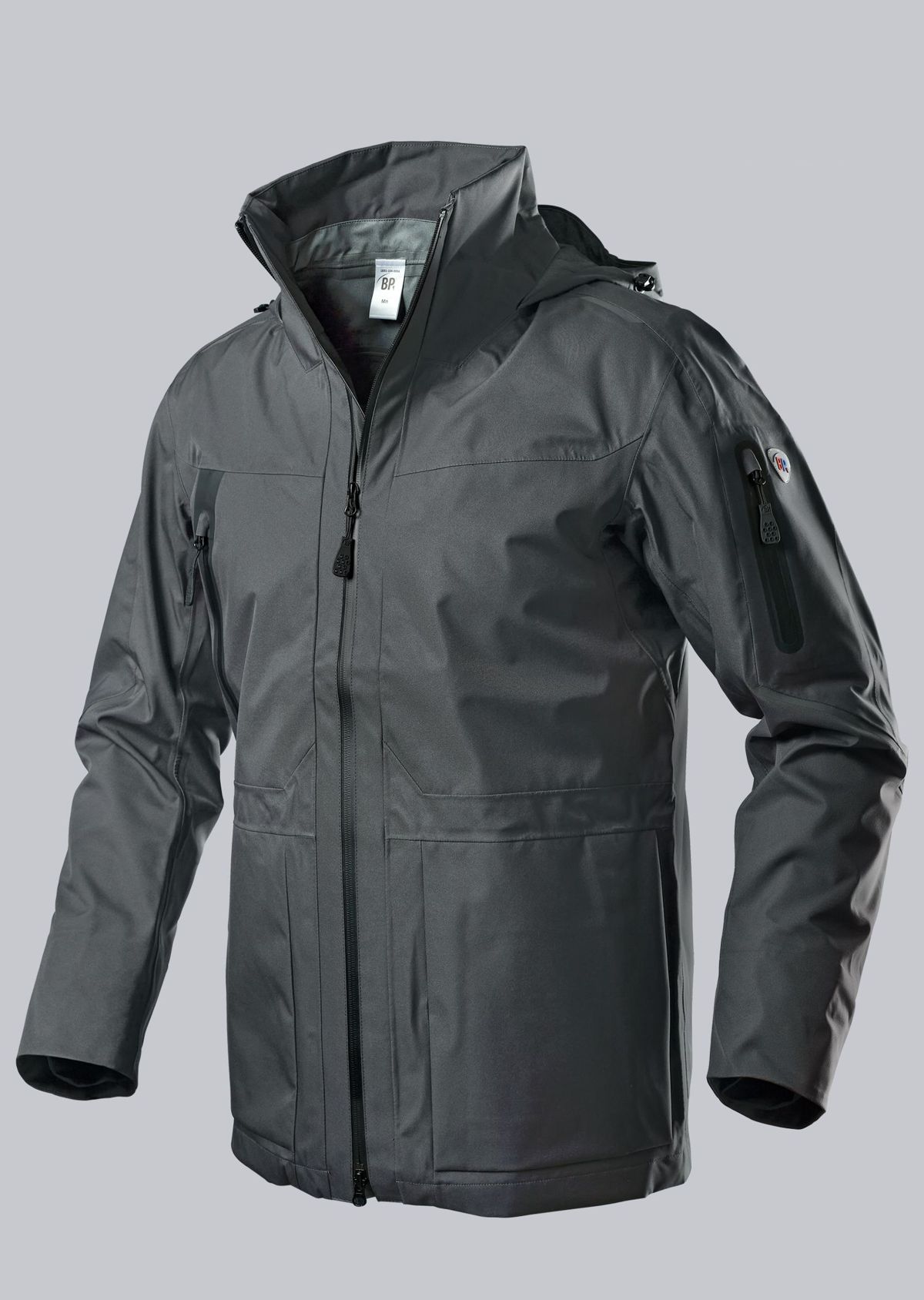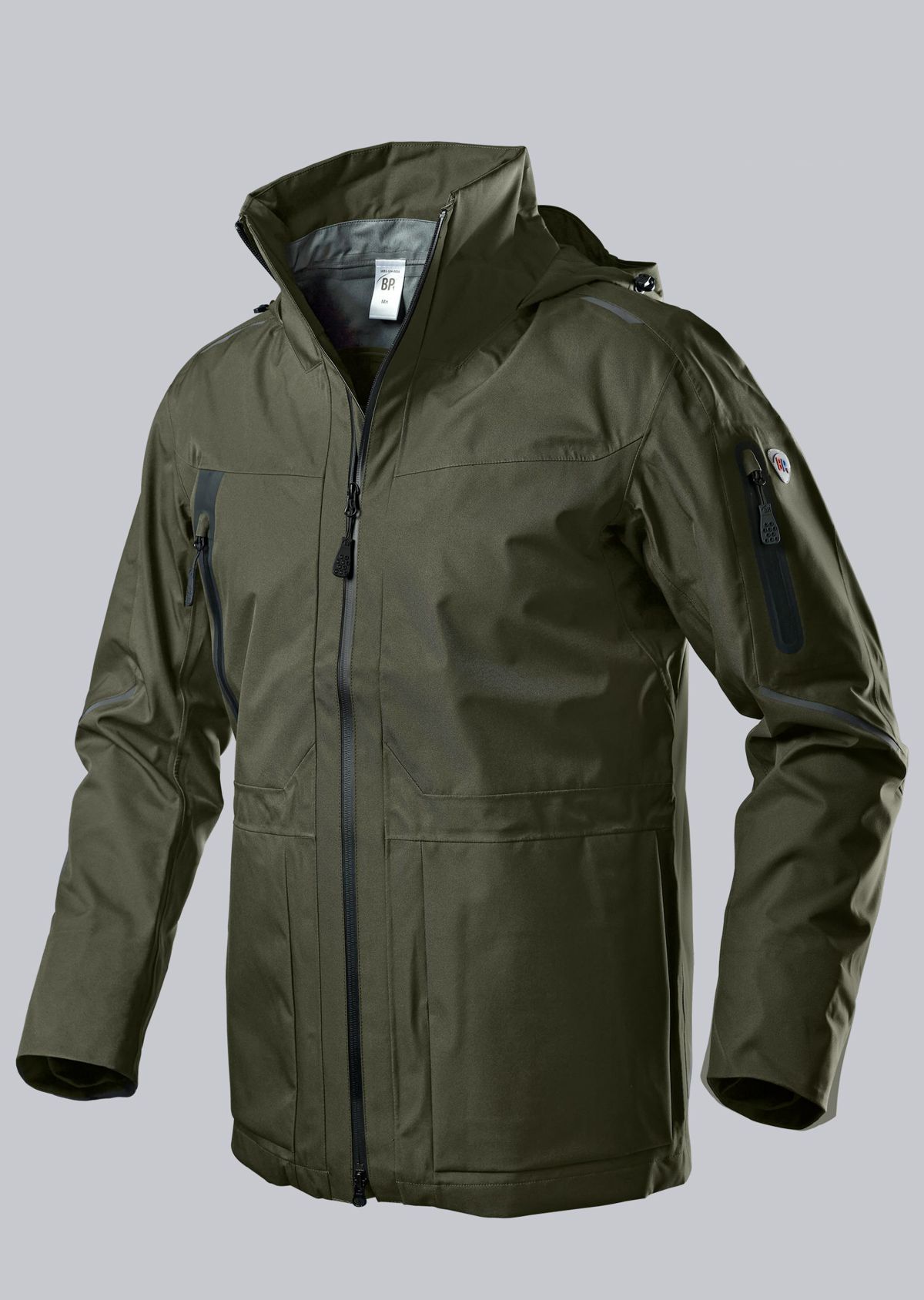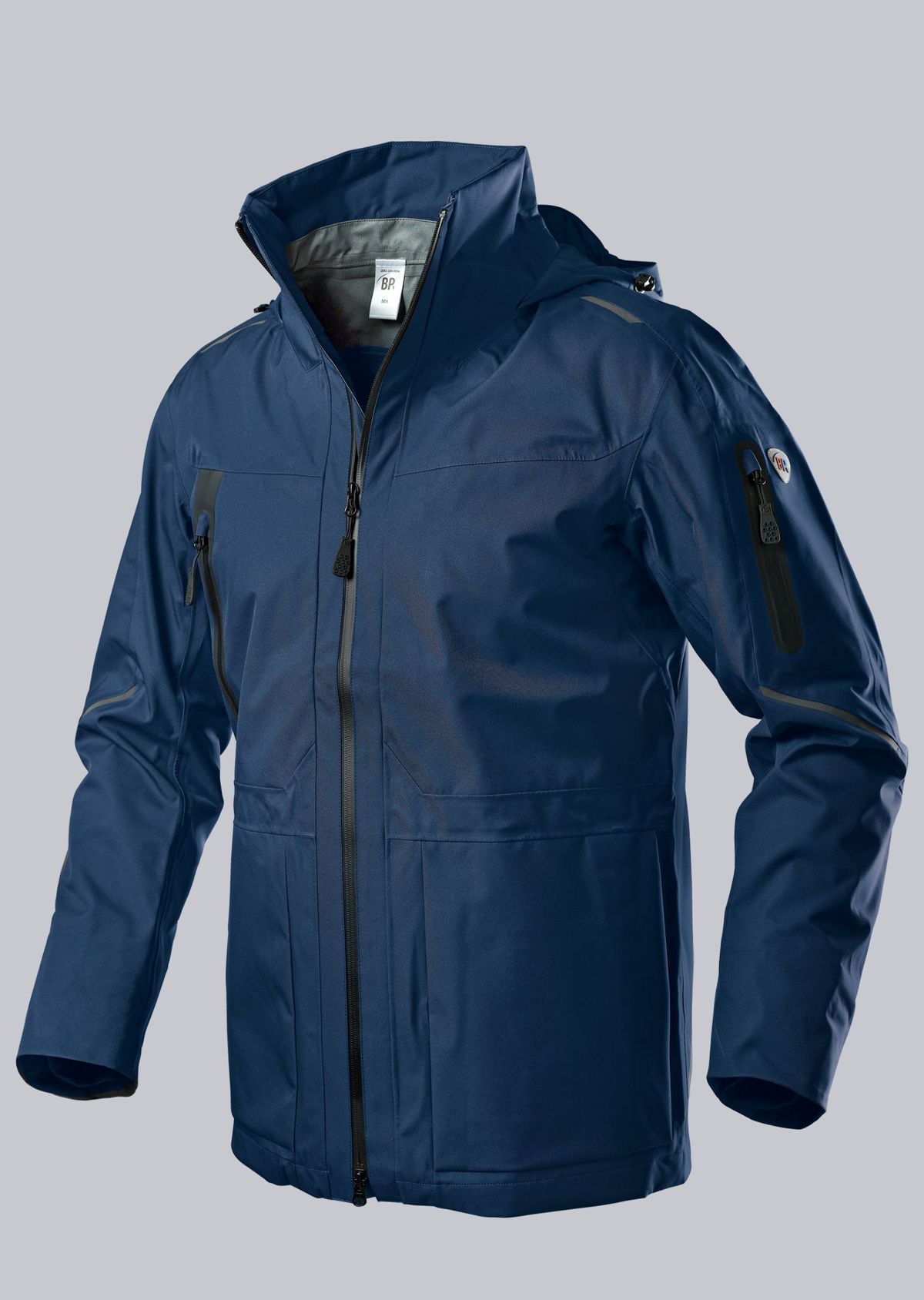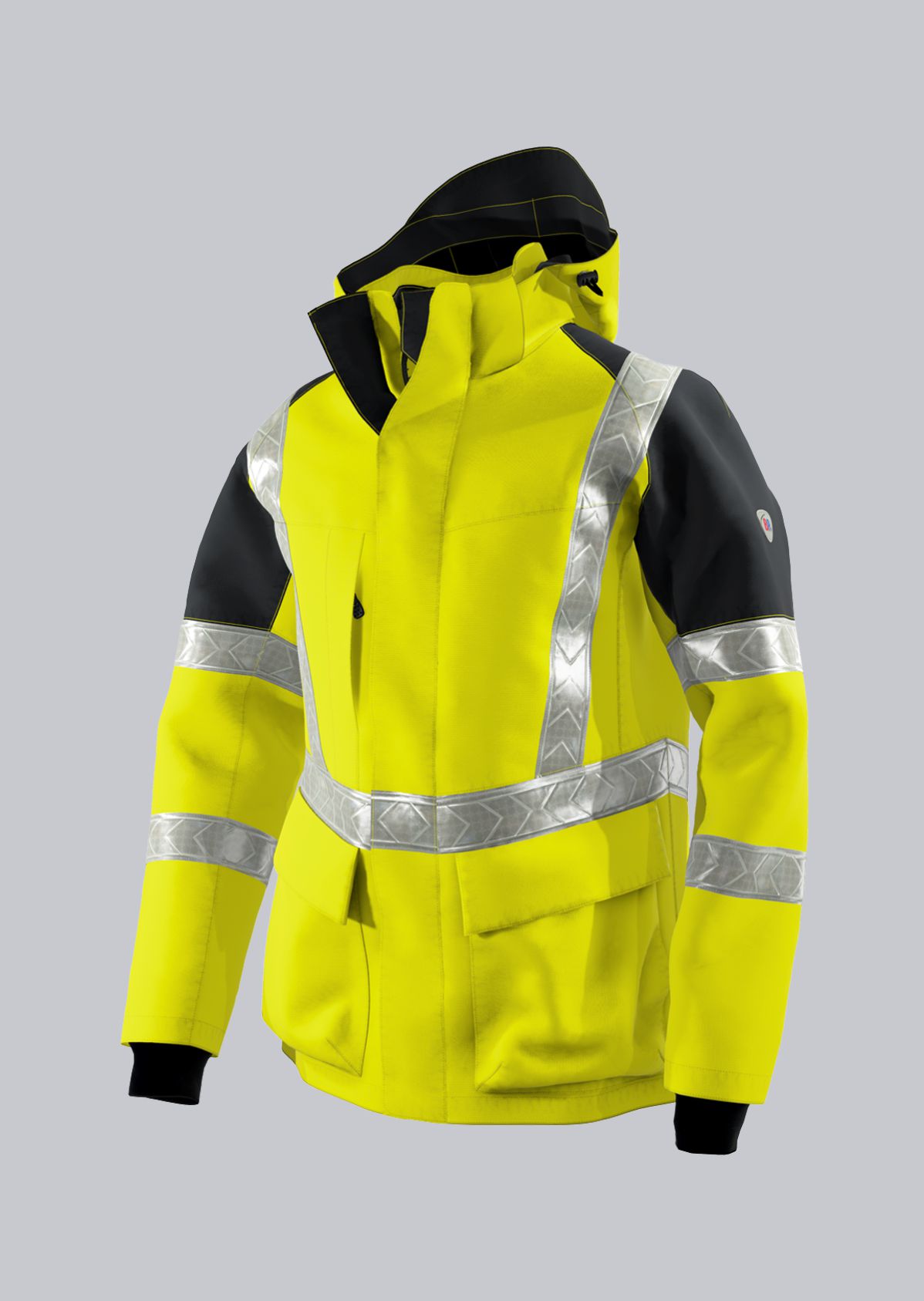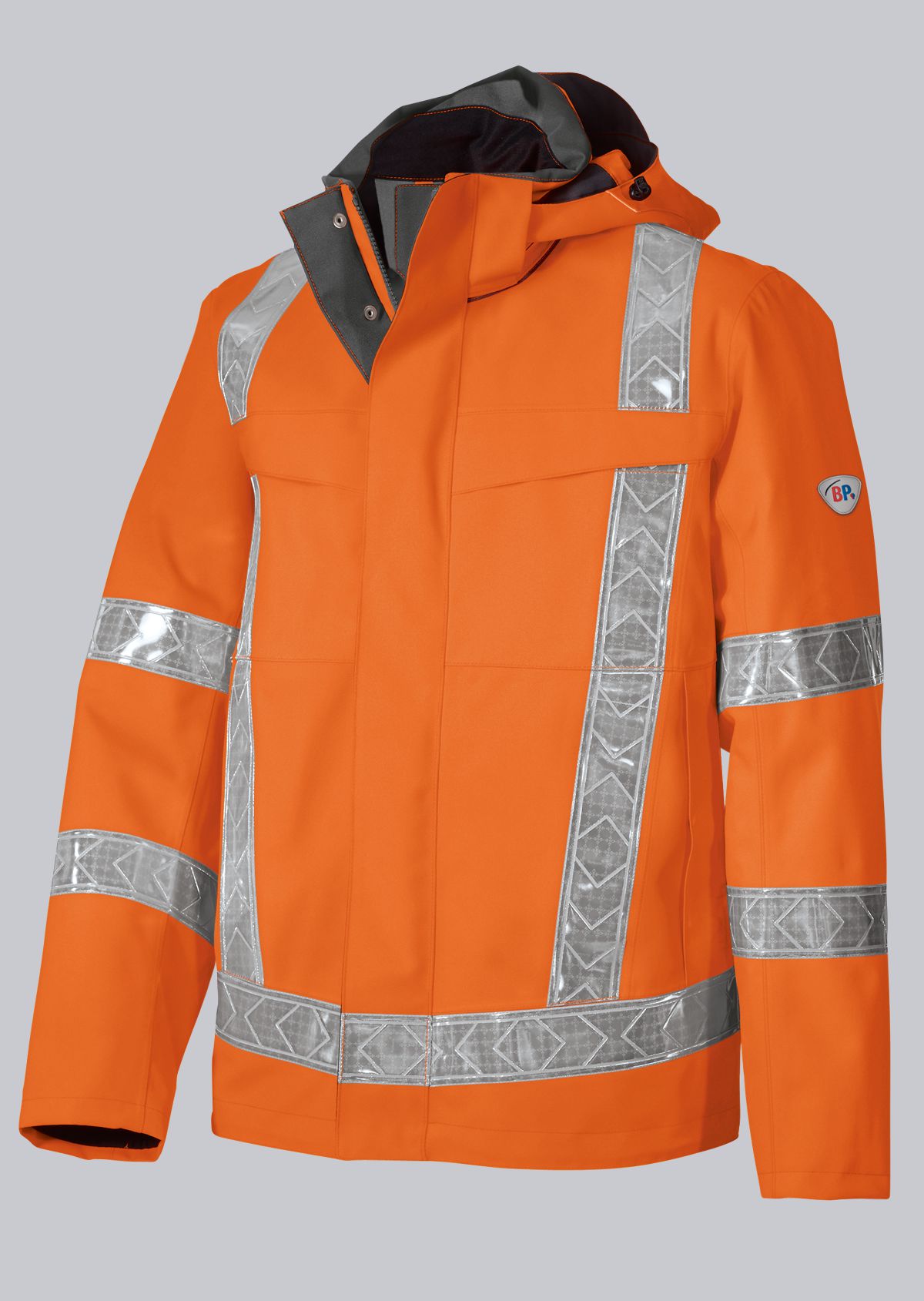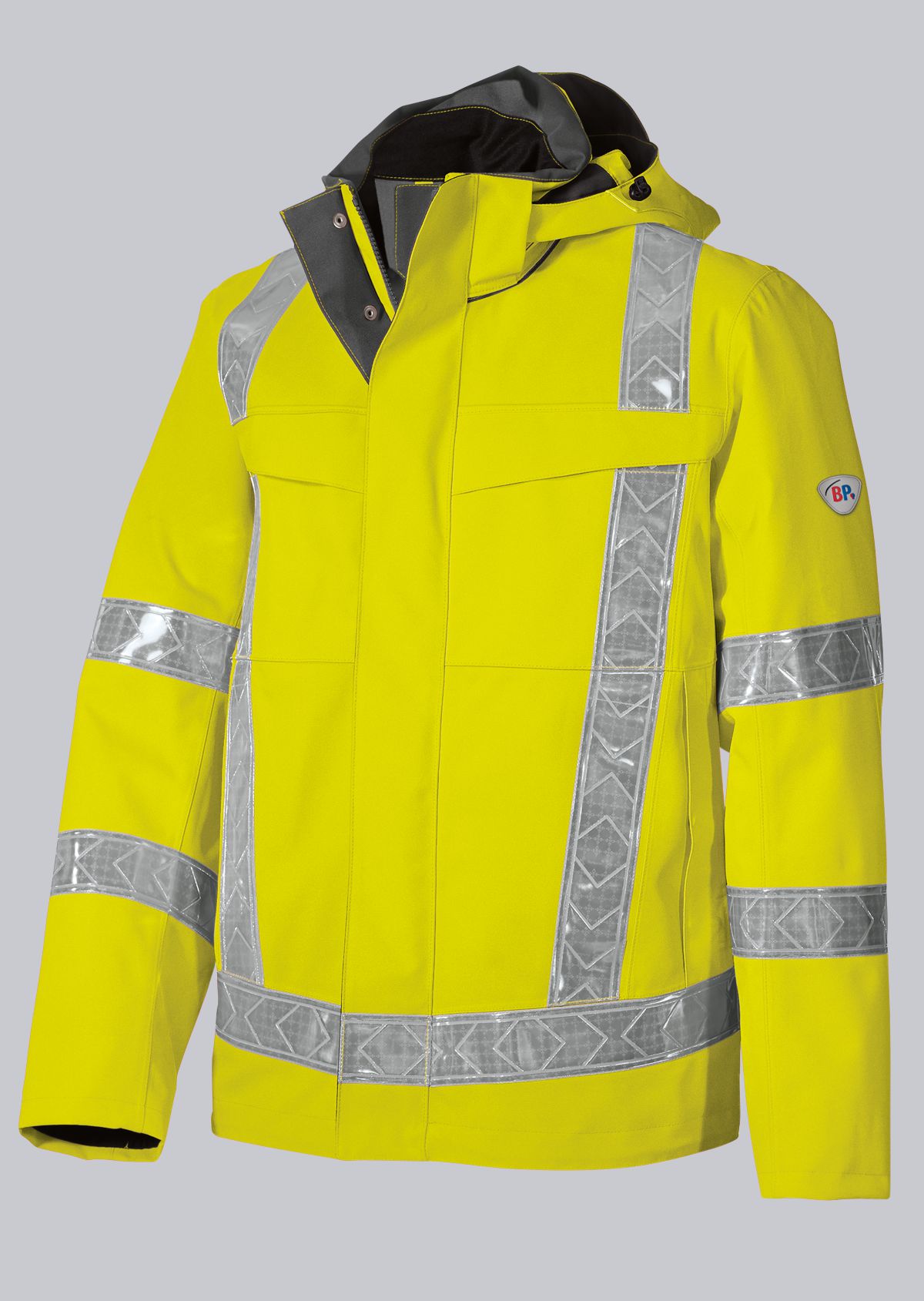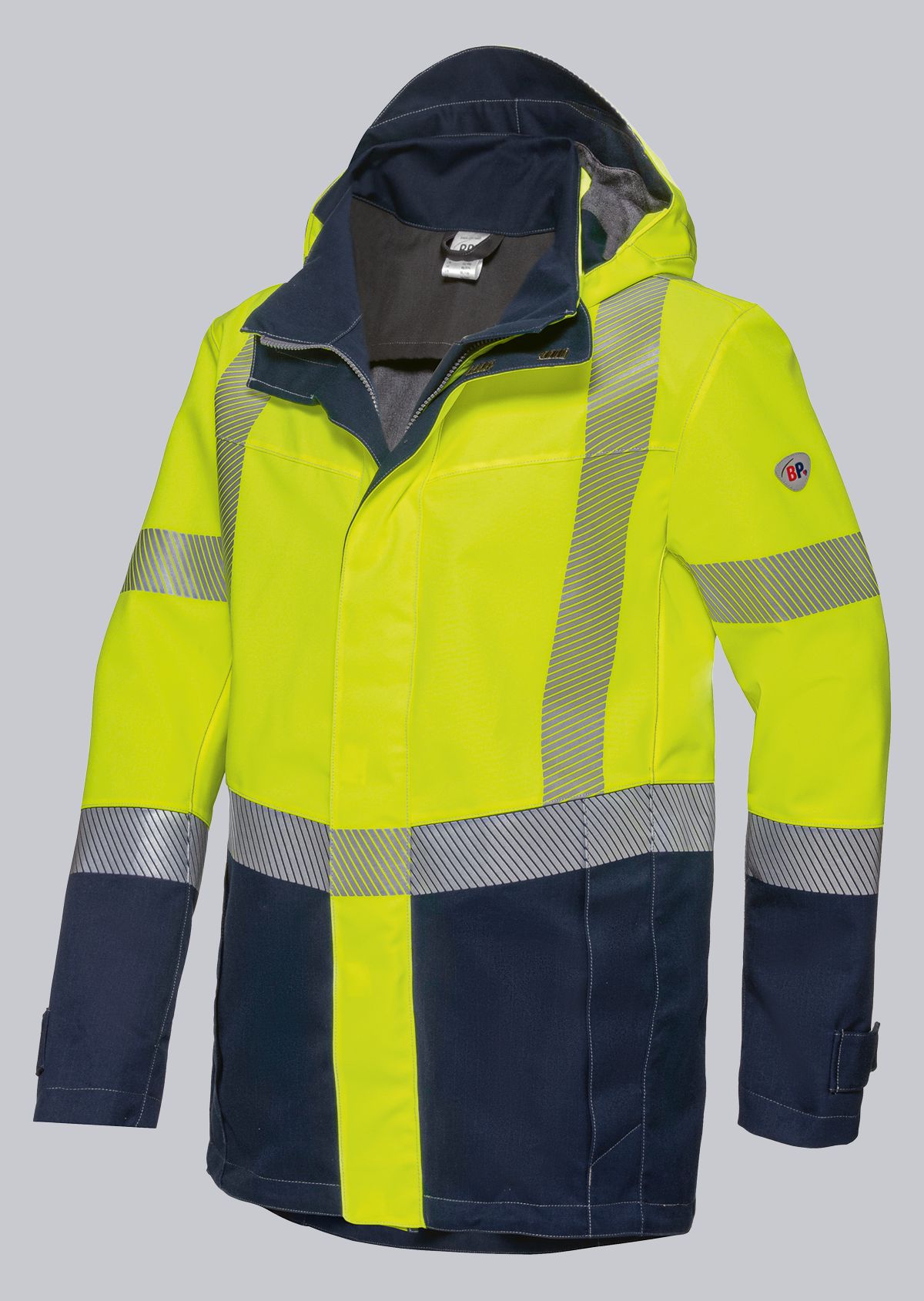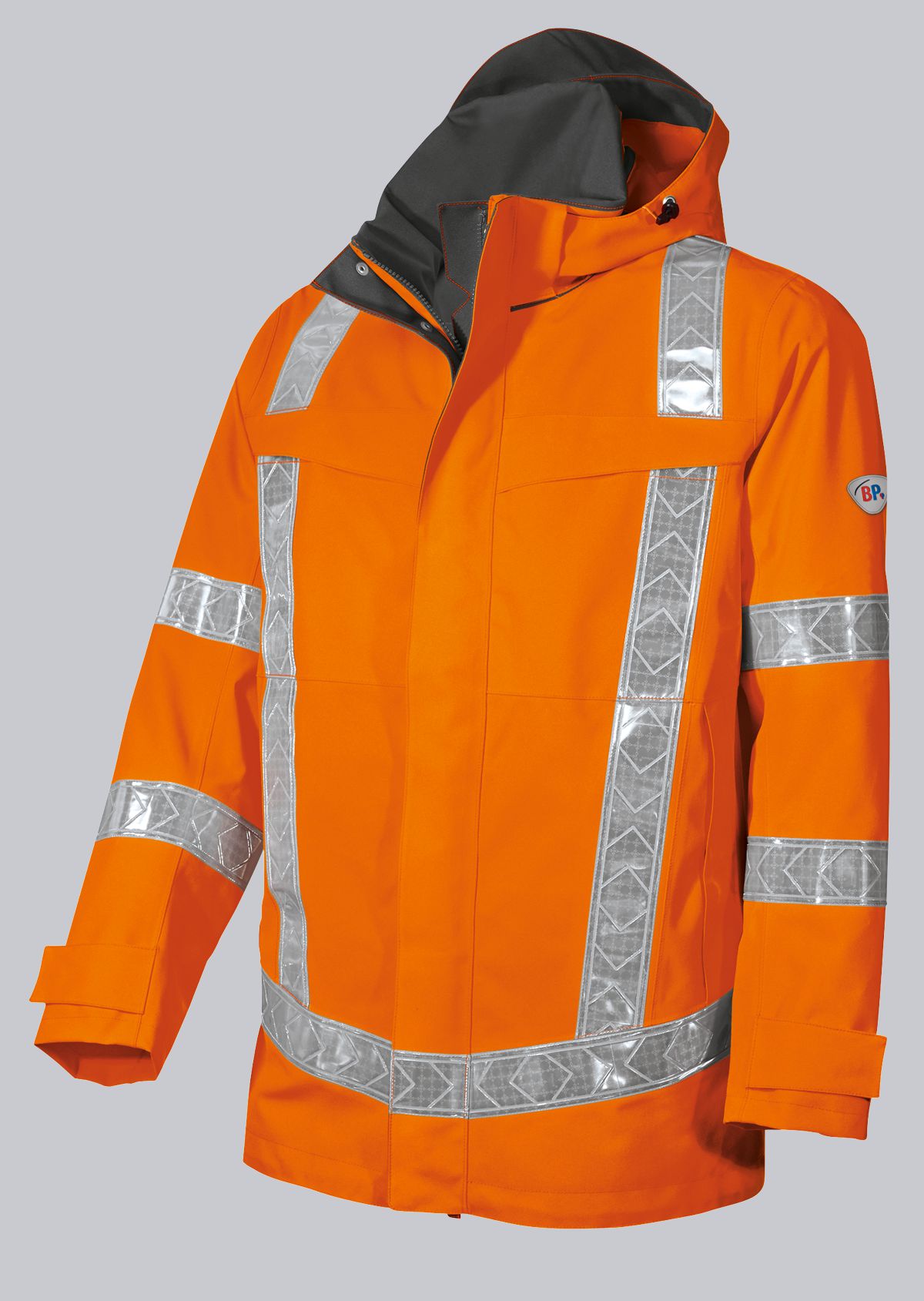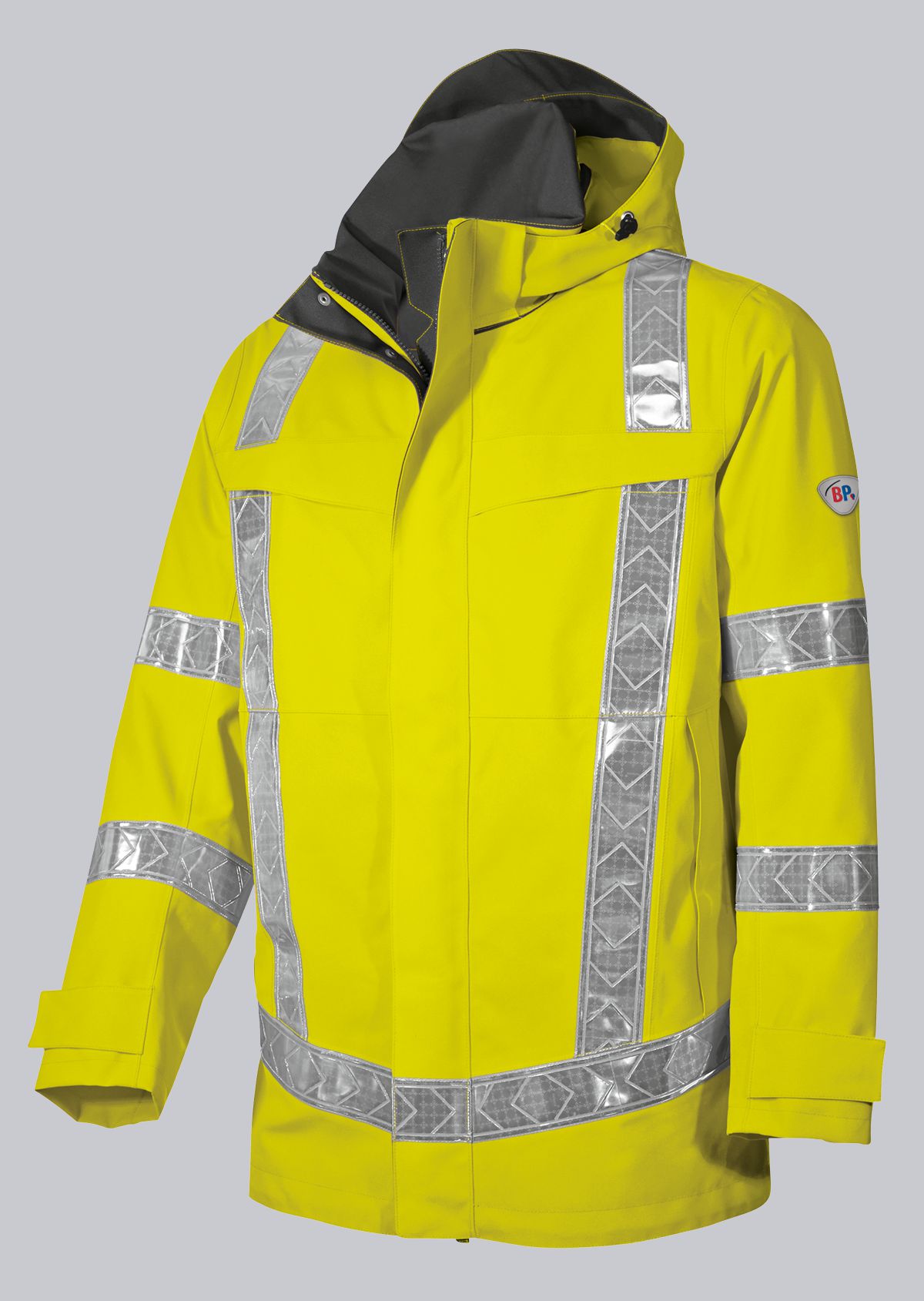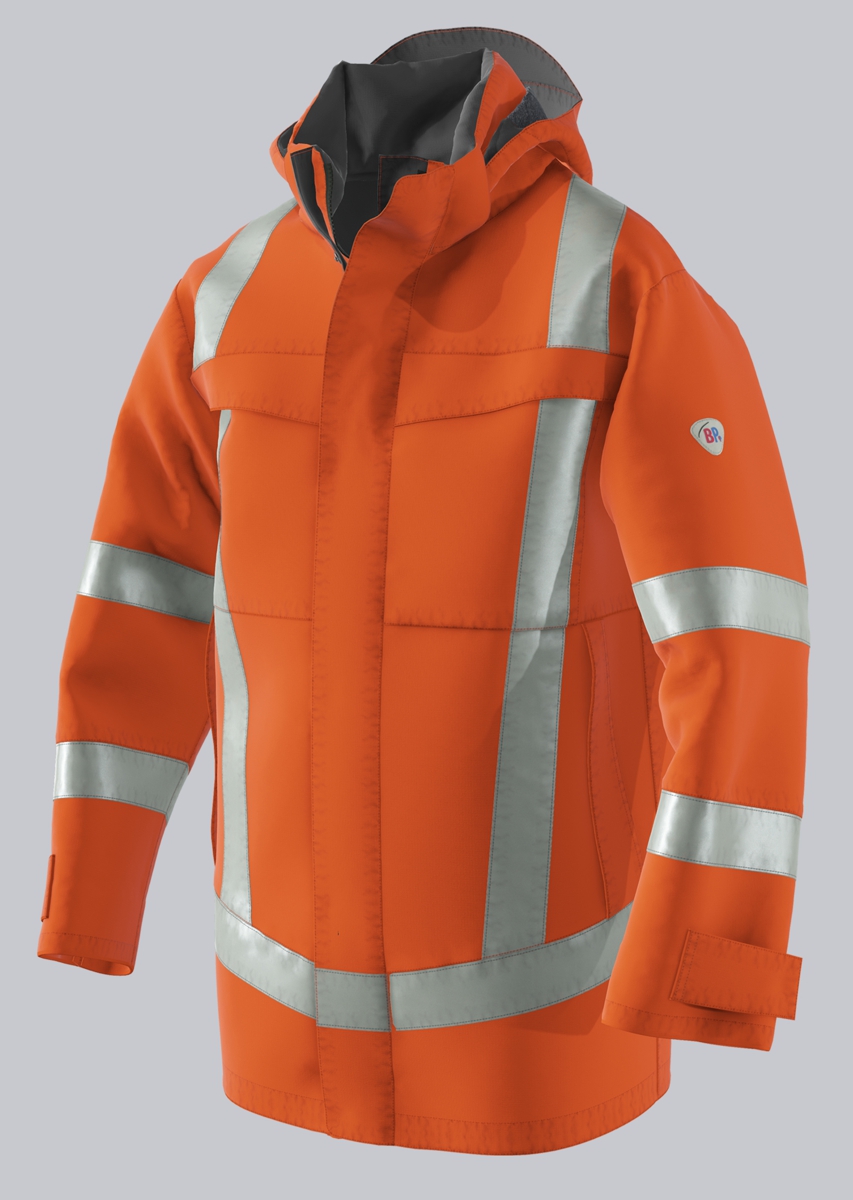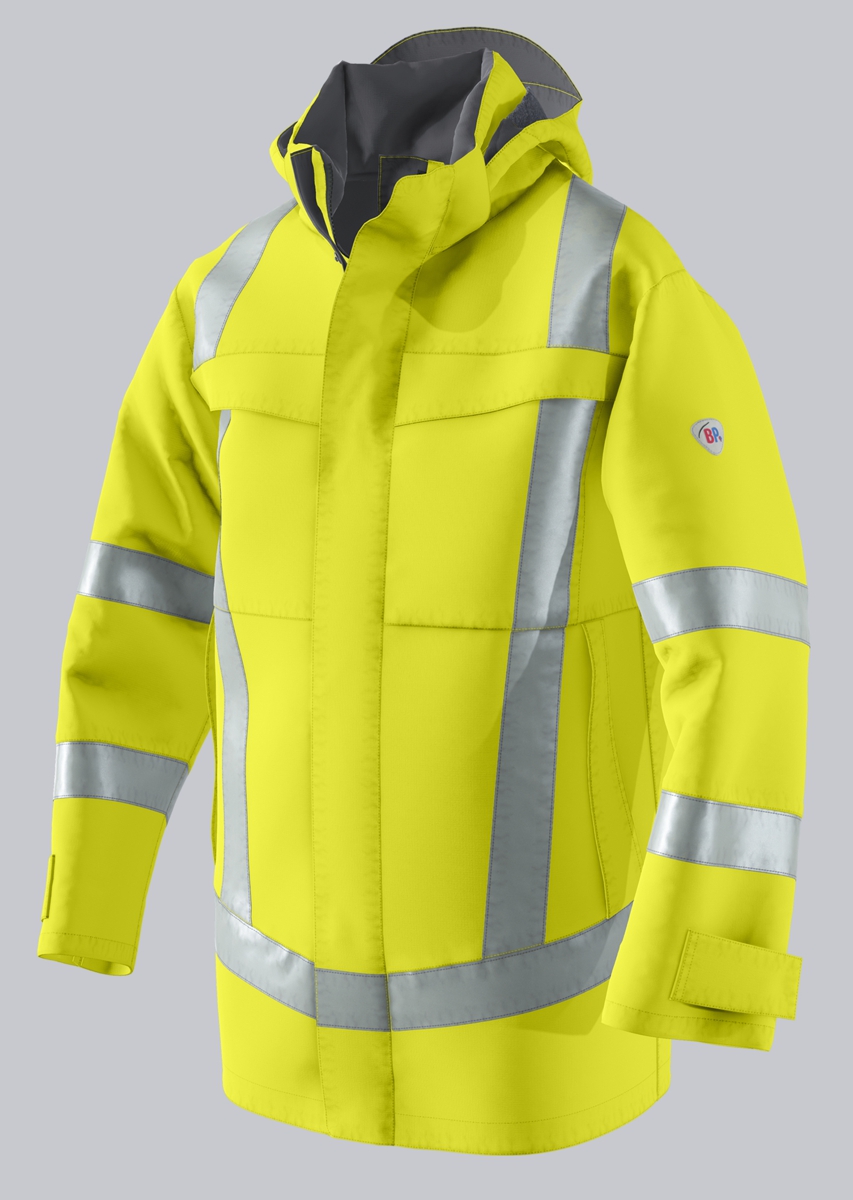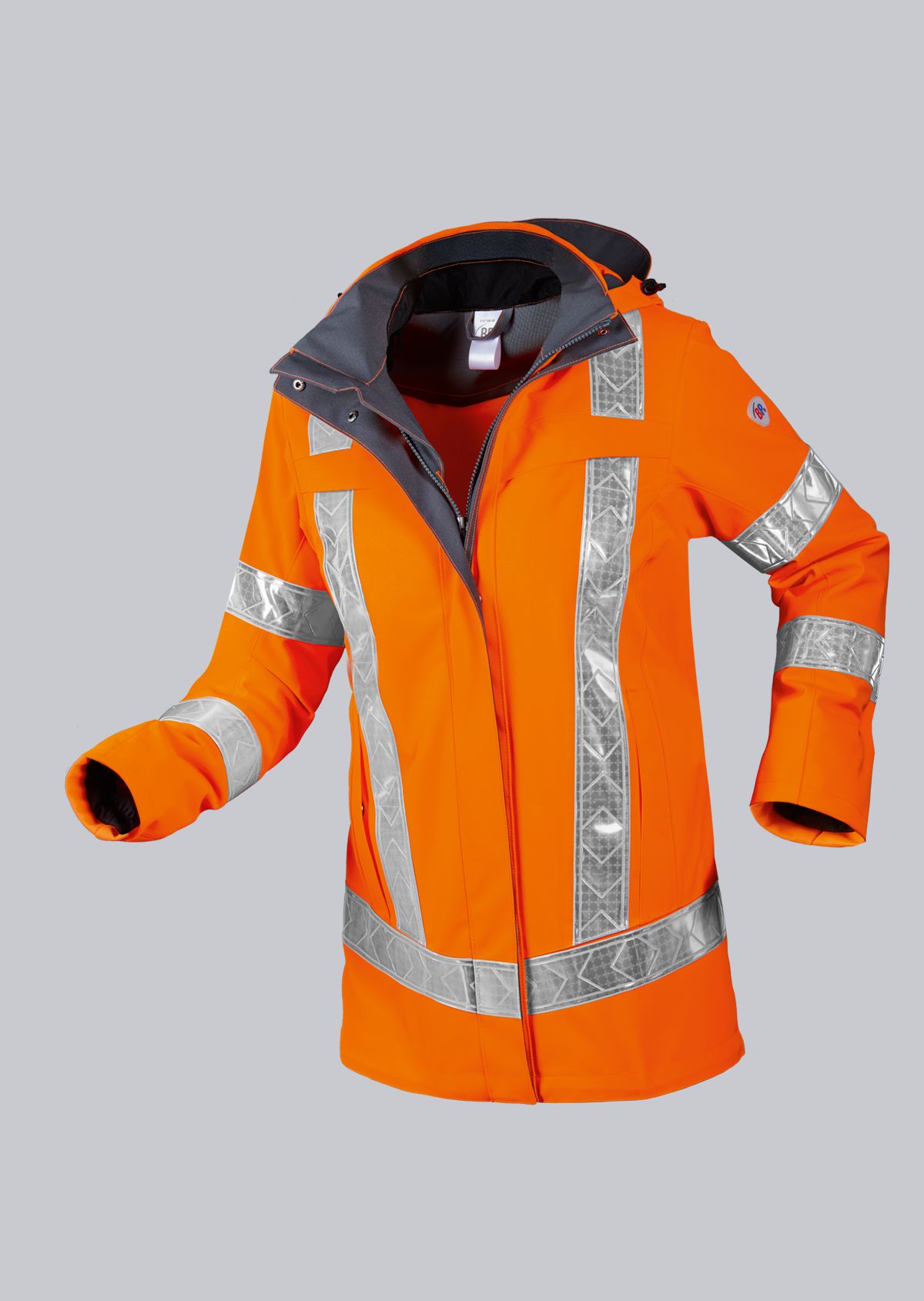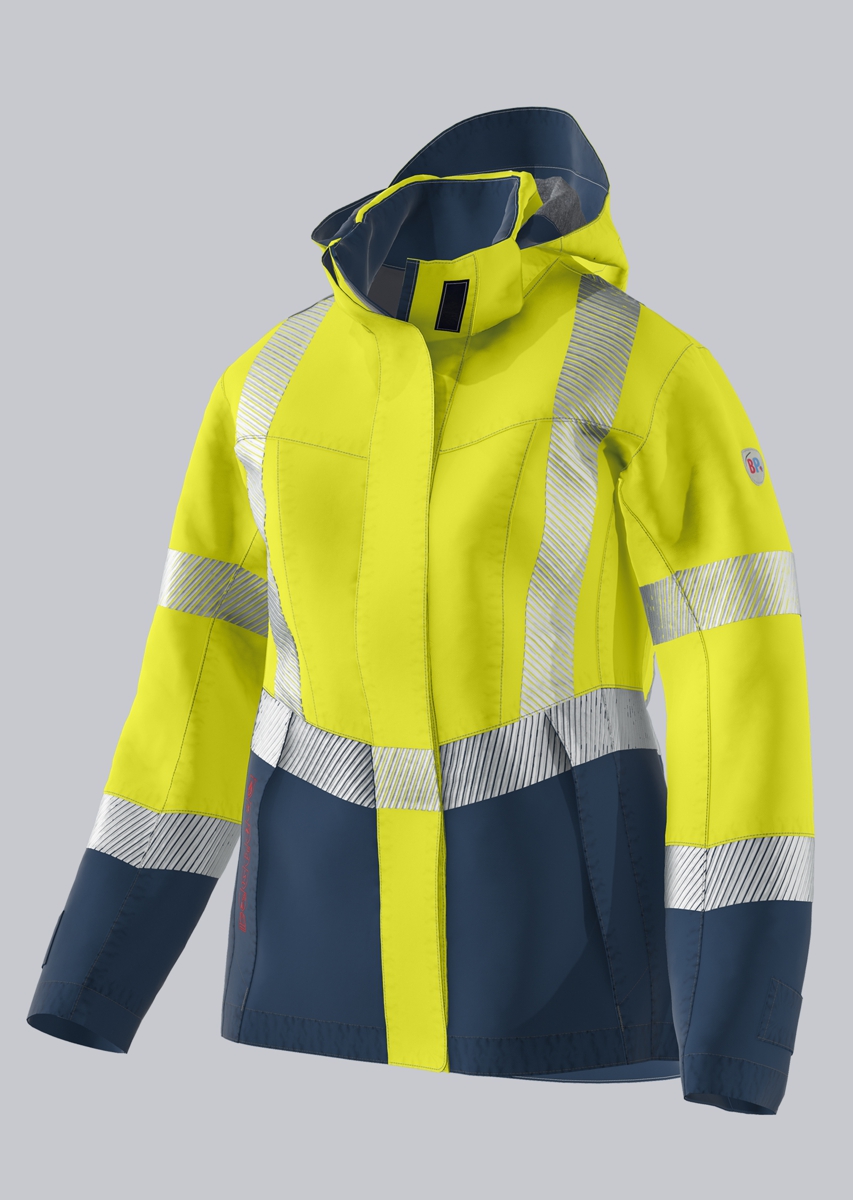Major Challenges for Material and Functionality
That’s why it’s important: If you’re working on a construction site, you need a rain jacket as workwear that protects you from wind and weather. This is especially true during transitional seasons when the weather can’t make up its mind.
Rain and wind often pose particular challenges on the construction site. Many tasks can’t wait and have to be carried out despite heavy rain or strong winds. That’s why the most important job of a weather protection jacket is to keep workers as dry as possible.
Below we give you 6 tips to help you choose the right weather protection jacket for you:
1. Pay attention to the jacket’s material!
High-quality weather protection jackets use advanced materials with integrated membranes. These are laminated in ultra-thin layers onto the fabric, providing reliable waterproofing. At the same time, water vapor like sweat can escape from the inside out. This makes the garment a dependable companion even in changing weather conditions.
Practical tip: Make sure the jacket is certified according to EN 343 – this gives you reliable guidance for tested waterproofing and breathability.
2. Check the wearing comfort!
Making a rain jacket waterproof is only one challenge. But what good is a 100% water-repellent weather protection jacket if you can’t move freely in it? Before buying, always check the fit and freedom of movement. Ideally, test it in realistic work scenarios: As a tradesperson on a construction site, on a roof, or in carpentry you often work overhead and are constantly in motion. Make sure you can still work comfortably in the jacket during your everyday tasks and physical effort.
Practical tip: Especially in the construction or trades environment, the weather protection jacket faces heavy wear – choose materials that are also abrasion-resistant so it lasts longer.
3. Value ergonomic design!
A good weather protection jacket is extremely light yet durable. Ergonomically shaped sleeves and an arm-lift system provide greater freedom of movement. With two side pockets, an inner pocket, and a chest pocket, the jacket is designed to meet workers’ needs. This ensures tools and essentials can always be stowed away easily without getting in the way while working.
Practical tip: Look for individually adjustable hem widths or sleeve cuffs – this lets you optimize the fit and keep out wind and rain even better.

